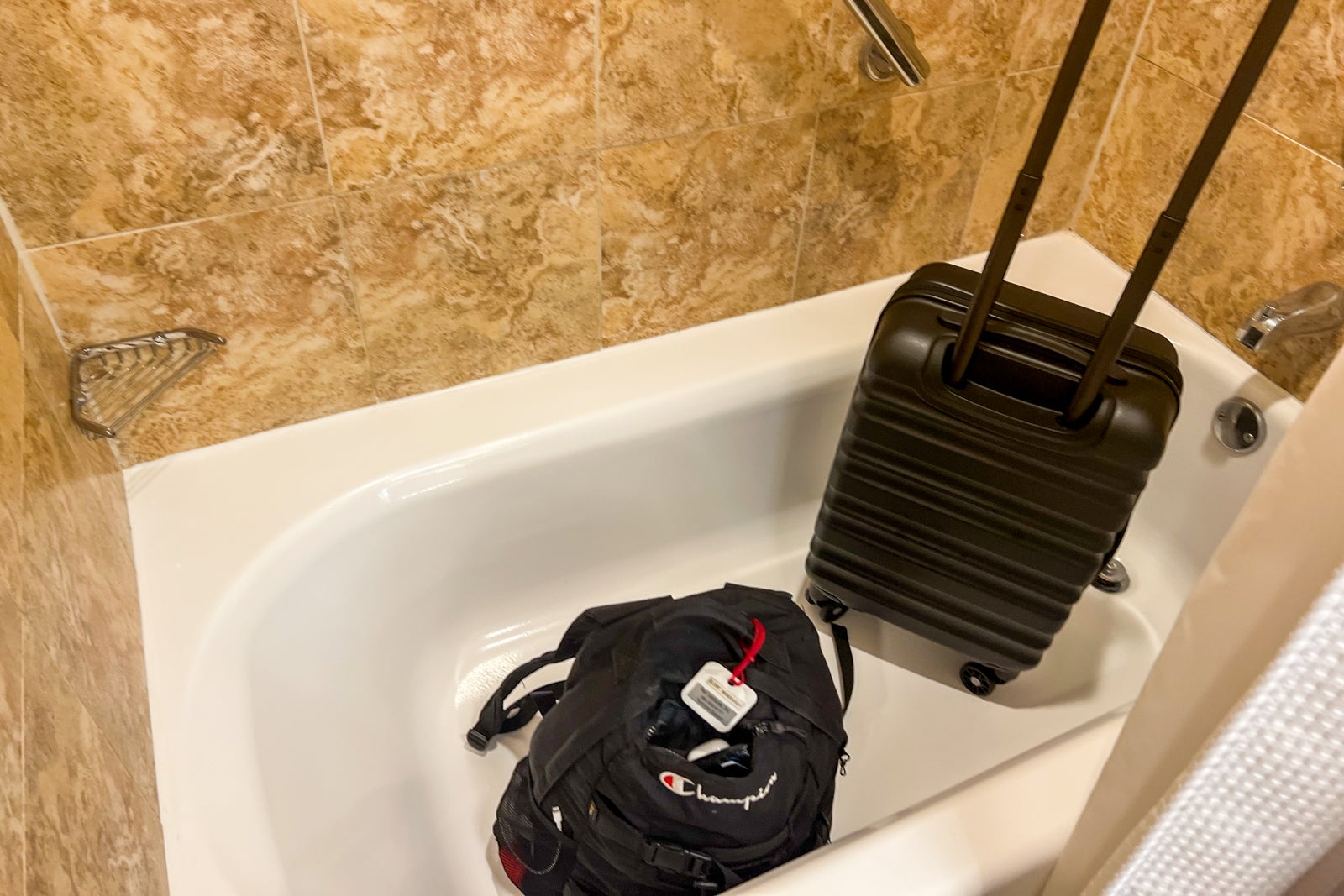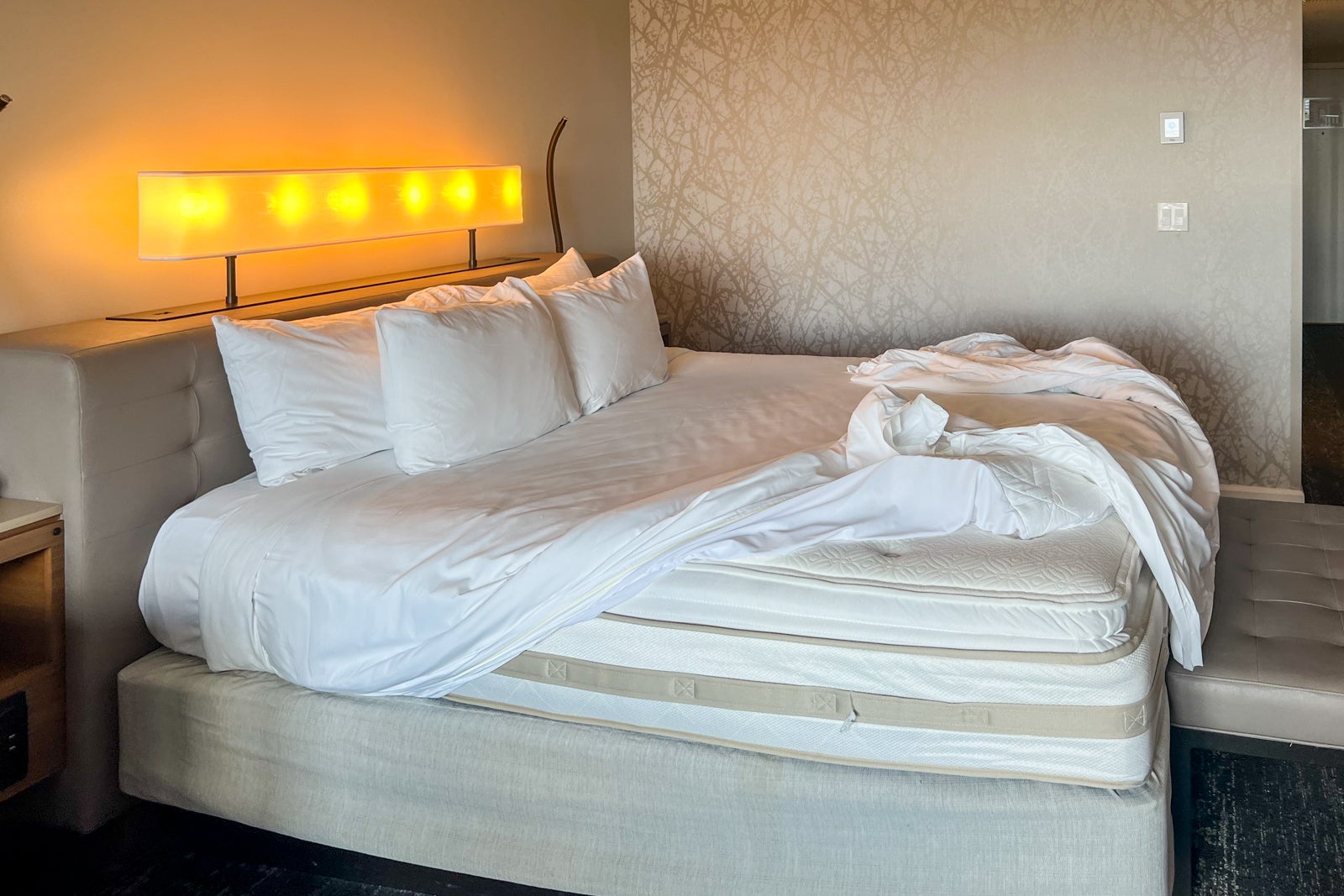French officials are attempting to quell Paris‘ bedbug problem ahead of the 2024 Paris Olympics after footage claiming the appearance of bedbugs across France — in Airbnbs, on public transportation and at movie theaters — has gone viral on social media.
It’s a timely reminder that bedbugs are an unfortunate yet common reality, whether you’re at home or traveling. It has even led guests to sue hotels following outbreaks. There have also been instances of bedbugs found on board airplanes and at airports.
Approximately 20% of U.S. homes and hotels have bedbugs annually, and nearly 68% of the reported bedbug infestations stem from hotels.
“Bed bug populations have experienced a resurgence in many parts of the world over the past couple of decades, especially within the last couple of years due in part to increased travel postponed during the height of the pandemic,” an entomologist from Orkin Pest Control said. “However, other factors have led to an increase in bed bug infestations in recent years, including resilience to treatment, lack of public awareness and changing pest control practices.”
Travelers shouldn’t worry about regularly encountering bedbugs in hotels, especially since reputable accommodations proactively control pests through treatments and routine inspections.
However, with all travel comes inherent risk, so it’s important to be aware of the possibility and take preventive measures when traveling. This can help with early detection, especially in densely populated areas with lots of tourists.
“Cities and regions with major airports or transportation hubs often see higher rates of bedbug infestations because they can unknowingly hitchhike along with travelers from different locations,” according to Orkin.
To help protect you and your belongings from bedbugs while on the road, here are five tips to follow, plus what steps you should take if you find bedbugs.
Tips to prevent bedbugs when traveling
Believe it or not, bedbug prevention starts before you begin your trip, though there are also several steps you’ll want to take once you leave home to ensure your travels remain bedbug-free.
Check bedbug policies before making any hotel reservations
As you research properties for your trip, reach out to any hotel you’re interested in to see what its bedbug policy is before you reserve a room.
Hotels should be able to speak to their bedbug prevention and control program, including regular inspections and access to a professional pest control company, according to the New York City Department of Health and Mental Hygiene.
Inspect hotel beds, cushions and drapes, and put luggage in the bathtub or shower
Do your due diligence the next time you’re checking into a hotel room. A quick visual scan is your best defense (not all people who get bitten by bedbugs have a skin reaction, so you could be packing them up in your luggage and have no idea). Bedbugs are nocturnal, so if you arrive during the day, you likely won’t be able to spot them in the flesh.
First, put your suitcase somewhere that is not on your bed. If there’s no luggage rack, leave it in the entryway or even the bathroom. Anywhere is better than putting it on the bed — especially before determining whether your bed may be infested. Bedbugs hide in soft spots, so using a luggage rack is your best bet, as they can’t climb up the metal legs.
When it comes to luggage, consider that bedbugs are less likely to attach to hard-shelled suitcases versus soft-shelled bags.

When you’re ready to check for bedbugs, peel back the linens of your bed until you can see the mattress, particularly the corners and the lining. Instead of looking for actual bugs, you’ll want to see if there’s any bedbug excrement, which mimics tiny little ink blots that a pen might leave.
Search the sheets, inside pillowcases and, most importantly, alongside the seams of the mattress. Look under the mattress while you’re at it, but be prepared to find a few crumbs here and there.

Be thorough with this process, and look beyond the mattress to include the headboard and any upholstered furniture.
Throughout your trip, regularly examine your clothing and luggage to catch a bedbug infestation in the early stages.
Bring a portable bedbug trap

If you want to take it a step further, you can purchase a portable bedbug trap to accompany you on trips.
One such option is the Ortho Home Defense Bed Bug Trap, which retails for $17 and promises to attract any particularly evasive bedbugs within one hour of setting it up.
Clean your luggage with a steamer and spray

Once you complete your bed sweep, if you want further peace of mind, you can consider using a travel steamer to clean your luggage. To effectively kill bedbugs, the surface temperature needs to be at least 120 degrees Fahrenheit, so you’ll need a steamer strong enough to reach those temperatures, such as the Beautural travel steamer.
For $35, this steamer provides 15 minutes of continuous steaming via a detachable 8.79-ounce water tank. It claims to heat up in 30 seconds and is safe on all fabrics, including clothes, curtains and furniture. It has three additional attachments for versatile steaming options.
Be sure to steam every inch of your luggage inside and out, remembering to unzip the lining and steam inside the pockets, around the handles and by the wheels.
If you are still concerned, consider removing and washing all clothing in hot water before drying your items on high heat.
If steaming your suitcase and washing your clothes is too much effort, pack a travel-size bedbug spray like this one from Hygea Natural for $10.99. At 3 ounces, it meets the Transportation Security Administration’s 3-1-1 liquids rule guidance, so you can carry it on a plane. It’s even child- and pet-safe and doesn’t have an odor, so it won’t leave a residue.

Simply spray it upon the affected surface to exterminate any concerns about bedbugs.
Check your airplane seat
“While people mostly think of bedbug infestations at hotels, other common bedbug hiding places are taxis, buses and airplanes,” according to Orkin. “Bed bugs are excellent hitchhikers, so they have plenty of opportunity to catch a ride with unsuspecting travelers. The insects creep into upholstery, carpeting, and gaps along seat frames.”
To avoid bedbug issues while on a plane, Orkin suggests inspecting the upholstery, carpeting and gaps along seat frames after you board and before you sit down to look for eggs or even full-size bugs near the cracks and crevices of the seatback cushions.
Steps to take if you find bedbugs
In the event that you discover signs of a bedbug infestation at a hotel, immediately tell the front desk agent and ask to be moved to a room that is neither above, below nor next to the offending room.
Your next order of business is getting your money refunded and leaving the property immediately. If the hotel offers to move you to another room, ask to speak to a manager. Chances are, if the bugs are in one room, they’ll be in others.
After you’ve booked other accommodations, make sure no bugs have been transported with you to the new location by washing and drying your clothes on high heat.
If you have a credit card that offers trip protection, call the issuer to find out if the company will cover the purchase of new luggage since there isn’t an easy way to treat large baggage.
Once you get to the new hotel, place the clothes you’ve worn in a plastic trash bag and seal it up until the clothes can be washed. Lastly, consider packing clothing in resealable plastic bags for an extra layer of protection.
If you find bedbugs at home, start with containing the infestation by isolating the affected areas.
“Do not move items from infested rooms to non-infested ones to prevent the bugs from spreading,” the Orkin entomologist said. “Keep in mind if you start sleeping in another area of the house, you may spread infestation there, too.”
Once the mess is contained, declutter and clean, as this will make it easier to spot and find the other bugs. Immediately wash your bedding, curtains, clothing and any other affected fabric in hot water and dry on hot heat to kill any remaining bugs or eggs.
“Because bed bug infestations can be difficult to treat, if you wait too long to get help, the problem only gets worse,” Orkin said. “Hiring a pest control company is the best way to get rid of bed bugs for good. They will inspect your home, identify the source of the problem, and create a treatment plan that will eliminate these pests.”
Bottom line
On your next trip, Orkin reminds travelers to keep the acronym SLEEP in mind:
- Survey the hotel room for signs of an infestation.
- Lightly lift and look in bedbug-hiding spots (the mattress, behind baseboards, pictures and torn wallpaper).
- Elevate luggage away from the bed and wall, and place belongings in the bathroom or on counters instead of on the bed.
- Examine your luggage carefully while repacking and once you return home. Always store luggage away from the bed.
- Place all your clothing from your luggage in the dryer for at least 30 to 45 minutes at the highest setting once you return home.
Also, remember that bedbugs have nothing to do with cleanliness.
“You can pick them up in the finest hotels, and they can hitchhike into the cleanest homes at any time,” the Orkin entomologist said. “You can help reduce your chances of a costly bed bug infestation by catching them early.”
Even once the bugs themselves are gone, the trauma can stay with you for a while. Taking the time to do your homework ahead of time before riding an airplane or checking into a hotel is well worth the effort.
Related reading:




